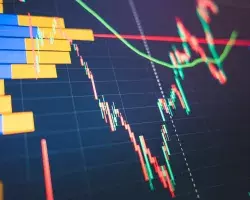The Vital Role of Support and Resistance in Trading: Unlocking Strategic Success
Support and resistance are cornerstone principles in trading that offer crucial insights into price dynamics and market behavior. These levels act as key indicators, signaling points where an asset's price is likely to either pause or reverse direction. Support refers to the price level where strong demand prevents further declines, while resistance marks the point where selling pressure halts a price rise.
Cracking the Trade Volume Code: Techniques for Traders
Trade volume, often referred to simply as "volume," is a fundamental concept in trading that measures the number of shares, contracts, or units of security traded during a given period. Understanding trade volume is essential for traders as it provides insights into market activity, liquidity, and investor sentiment. By analyzing volume data, traders can make more informed decisions and gain an edge in the market.
Understanding Balance of Power Indicator
In the dynamic realm of financial markets, where the interplay between buyers and sellers is akin to an intricate dance, traders and analysts wield an array of tools to navigate these complexities. Among these tools, the Balance of Power (BOP) Indicator emerges as a pivotal component of technical analysis. This article endeavors to illuminate the nuances of the Balance of Power Indicator, including its calculation, significance in assessing market dynamics, applications, strategies, and considerations.
Decoding Risk Appetite in Forex Trading
Embarking on the dynamic journey of forex trading is akin to navigating uncharted waters. Picture this: a seasoned trader, well-versed in the language of risk appetite, standing at the crossroads of potential profit and potential loss. In this financial odyssey, risk appetite becomes more than a theoretical concept - it transforms into a compass guiding traders through the turbulent seas of currency markets. Let's delve into the depths of risk appetite, exploring its nuances and unveiling its crucial role in shaping effective forex trading strategies.
From Pause to Profit: A Trader's Handbook on Stock Consolidation
Navigating the intricate dynamics of financial markets, traders often encounter a captivating phenomenon known as stock consolidation. This phase is marked by delicate equilibrium in price movements. In this trader's handbook, "From Pause to Profit: A Trader's Handbook on Stock Consolidation," we embark on a comprehensive exploration of stock consolidation, unraveling its intricacies and providing valuable insights and tools to navigate this unique phase of market dynamics.
The Fundamentals of the Volume in the Stock Market: A Comprehensive Guide
Stock volume is a pivotal concept within the financial markets, carrying immense importance for both novice and seasoned traders. It pertains to the average number of shares traded during a specified time frame and stands as a cornerstone in professional traders' toolkits.
Technical Analysis for Beginners: Yes, It Is Possible
Technical analysis in trading is used to make forecasts of price movements and helps to determine the exact entry and exit trading points. There are many analytical methods used by traders, which are able to track the statistical direction and speed of value and quotes in the market. In this article, we will provide insight into the fundamental aspects of technical analysis every beginner should know.
How to Use Volume in Technical Analysis to Improve Your Trading
Most traders know that the methods of technical analysis are based on the study of changes in the movements of price charts and the Market Depth. However, another important object of technical analysis is trading volumes. Experienced traders believe that there are two objective factors in the market: the price and volumes. Let's see in more detail what a trading volume is, how to analyze it, and which tools for its evaluation are available to a modern trader.







